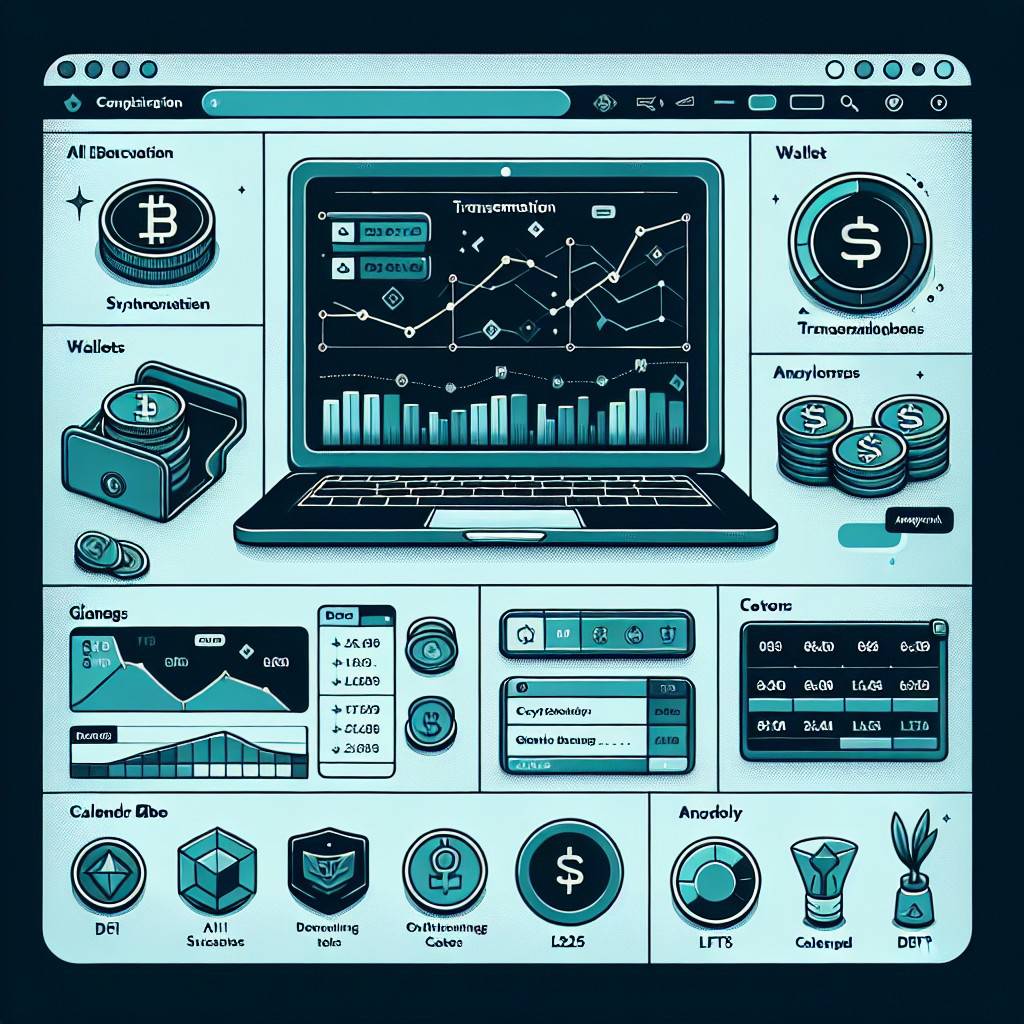
Introduction: Make Crypto Taxes Predictable in 2025
Crypto taxes don’t have to feel chaotic this year. With the best crypto tax software, you can automate wallet imports, categorize tricky DeFi activity, and generate compliant reports in minutes. Instead of scrambling in April, you’ll have clean, audit-ready records and crystal-clear gains.
Markets, networks, and NFT ecosystems evolve fast. Your tax tool should keep pace. Below you’ll find a friendly guide to choosing a platform that fits your stack, covers advanced activity, and supports your country’s rules—so 2025 filing is boring in the best possible way.
Quick Summary: Choosing the Right Tax Tool for Your Stack
If you need a fast recommendation, match your profile to the tool that fits how you invest and transact:
- Active DeFi trader on DEXs/L2s: Koinly for broad chain coverage and strong reconciliation.
- NFT creator/collector: CoinLedger for simple imports, NFT tagging, and retailer-friendly reports.
- Long-term investor + portfolio visuals: CoinTracker for tracking cost basis across exchanges and wallets.
- Beginner or casual: Accointing for easy setup and clear dashboards.
- Complex corporate or want done-for-you: TokenTax for concierge prep and filing support.
All options support core CSV/API imports, cost basis calculations, and tax forms. The best choice depends on integrations, advanced coverage, and your budget.
Selection Criteria: Accuracy, Integrations, DeFi/NFT/L2 Support, and Cost
Evaluate platforms against a short, practical list before committing:
- Accuracy: Robust cost-basis engine (FIFO, LIFO, HIFO) and correct handling of transfers to avoid phantom gains. See background on cost basis.
- Integrations: Direct APIs for major exchanges, xPub/ETH addresses, and fast CSV ingestion for long histories.
- DeFi/NFT/L2 support: Correctly parses DeFi swaps, liquidity events, staking rewards, bridges, and NFT mints/sales on L2s.
- Privacy & security: Strong permissions, data export, and audit logs; SOC 2-style controls are a plus (what SOC 2 means).
- Cost: Transparent tiers, free previews, and pricing by transaction count or tax forms rather than hidden add-ons.
Focus on the features you’ll use weekly, not edge cases you’ll never touch.
Top Picks 2025: Strengths and Use Cases (Koinly, CoinLedger, CoinTracker, Accointing, TokenTax)
Here’s how leading platforms stack up based on real-world workflows. All of them can help you decide on the best crypto tax software for your specific needs.
- Koinly: Known for broad chain coverage, precise wallet reconciliation, and DeFi parsing on EVM chains and major L2s. Strong for power users with lots of self-custody, DEX trades, and bridging. Good reporting for Form 8949 and Schedule D.
- CoinLedger: Friendly UI, fast imports from popular wallets and marketplaces, and intuitive NFT tagging. Solid exports to consumer tax software and clear income classification for staking and airdrops. Great for creators and collectors who want fewer clicks.
- CoinTracker: Excellent portfolio tracking plus tax reports. Helpful for investors who want continuous cost basis visibility, P&L charts, and multi-exchange sync to curb surprises before year-end.
- Accointing: Beginner-friendly onboarding, digestible dashboards, and straightforward transaction fixes. A practical pick for smaller portfolios and occasional traders who value simplicity and a fair price.
- TokenTax: Strong for complex returns and those who prefer expert help. Offers done-for-you options, white-glove reconciliation, and detailed statements for entities. Ideal if you’ve got heavy DeFi, legacy ICOs, or corporate structures.
Tip: Start with a free tier or trial import to stress-test your most complex wallet. If the auto-matcher handles it, you’ve likely found your winner.
Setup Workflow: Importing Wallets, Tagging, Reconciling, and Review
A clean setup now saves hours at filing time. Follow this repeatable flow:
- Import: Connect exchanges via API, add wallet addresses (e.g., BTC xpub, ETH address), and upload CSVs for legacy history.
- Tag: Mark transfers between your own wallets, label staking rewards vs. income, and categorize NFT mints, sales, and royalties.
- Reconcile: Resolve unknown tokens, missing prices, and duplicated fills. Fix cost basis gaps by backfilling the earliest acquisition.
- Review: Check summary P&L, realized/unrealized gains, and income totals. Export draft reports for your accountant to sanity-check.
Document any manual edits in notes so you retain a clear audit trail later.
Advanced Coverage: DEX Trades, Liquidity, Bridges, Staking, and Airdrops
Modern portfolios live beyond CEX spot trades. Ensure your tool handles:
- DEX swaps & LP: Identify token-for-token swaps, LP adds/removals, and fees. Many treat LP add/remove as disposals depending on jurisdiction.
- Bridges & L2s: Accurate cost basis as assets move via bridges and rollups, preserving original acquisition data.
- Staking: Treat staking rewards as income at fair market value on receipt, then track future disposals as capital gains.
- Airdrops: Income on receipt in many jurisdictions; watch for low-liquidity price spikes. Gas should be tracked too—learn about Ethereum gas.
If your tool mislabels these, your return can drift from reality. Test with a known DeFi wallet first.
Global Filing: Cost Basis Methods, Forms, and Regional Nuances
Regulations vary widely, so match your software’s settings to your jurisdiction.
- United States: Report disposals on Form 8949 and totals on Schedule D. Methods like FIFO, LIFO, and HIFO are allowed; apply consistently across the year.
- United Kingdom: HMRC share pooling and matching rules differ from simple FIFO; see CGT guidance. Crypto is often treated as a capital asset.
- Australia: ATO capital gains and income treatment varies by activity; see ATO CGT.
- Canada: CRA distinguishes capital gains vs. business income; see capital gains.
Whichever method you choose, keep consistent policy notes and retain exportable audit logs. When unsure, get local advice.
Pro Tips: Reduce Headaches and Bills (HIFO, Loss Harvesting, Gas Accounting)
A few habits go a long way toward lower stress and smarter taxes:
- Use HIFO (where allowed): High-In, First-Out can reduce gains on disposals by selling the highest-cost lots first.
- Tax-loss harvesting: Realize losses strategically to offset gains; learn the basics of loss harvesting.
- Track gas fees: Capture on-chain fees per transaction. Depending on jurisdiction, they may adjust basis or be expensed.
- Avoid duplicates: Don’t connect the same account via both API and CSV. Deduplicate to prevent phantom income.
- Quarterly check-ins: Reconcile monthly or quarterly so year-end is routine, not a crunch.
Document your methodology, and save a read-only backup of your final reports.
Conclusion: Close Your Year with Confidence and Clean Records
With the right platform, crypto tax season becomes predictable. Choose the tool that matches your activity, import everything, tag consistently, and reconcile as you go. The result is clean records, accurate forms, and fewer surprises.
Try a free import on two contenders and see which handles your most complex wallet best. That’s often the fastest path to the best crypto tax software for you.
FAQ: Free Tiers, Data Privacy, Amending Returns, and Audit Support
- Are there free tiers? Most tools offer free imports and a preview of gains, with paid tiers to download tax forms or increase transaction counts.
- How is my data protected? Look for read-only exchange APIs, granular permissions, encryption, and compliance frameworks like SOC 2. You should be able to delete data and export everything anytime.
- Can I amend a return? Yes. In the U.S., file an amended return using Form 1040-X. Your software should regenerate corrected 8949 and schedules after fixes.
- Do these tools help in an audit? Quality software maintains an audit trail of every transaction, tag, and edit, plus exportable reports that tie numbers to on-chain and exchange records.
Still unsure? Read a couple of independent reviews (Forbes and HubSpot often publish overviews) and test your top pick with a real wallet before you buy.


No Comments